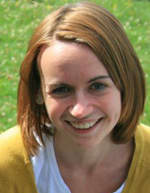About local walls

The Day has already published “African Journal” by Olha Makar, a student who worked as a volunteer with children in Mozambique last summer. Owing to the author’s experience our readers had an opportunity to find out more about life of people in the African country which suffered form an exhausting civil war 20 years ago. These were not statistics or official commentaries, but author’s private impressions presenting life “somewhere” under a different angle. We go on with the format in which young people having active life position share their personal experience which is interesting and useful for everyone and publish the first entry of “Louvre’s notes” by Olha Kurovets, a second-year student of a master’s research program in Ecole du Louvre (Louvre School) in Paris. Olha’s studies in the legendary university have just started; earlier the girl studied museology at the University of Neuchatel in Switzerland and before that she had done cultural studies at the National University Kyiv Mohyla Academy. Olha wrote us about her studies abroad in particular and European education in general and about everyday life of a Ukrainian student in Paris.
The question I have to answer very often is the following: is your university situated in Louvre? The answer is: yes and no. If we speak about Louvre as a famous museum with La Giaconda and 8.5 to 9 million visitors every year then it is not completely true. However, some bachelors’ classes (about once a week) are held in museum halls, near works of art, but the rest (especially, masters’ ones) are run in a different place.
If we speak about the palace on the left bank of the River Seine, which was built for nearly 800 years, then yes. Most of premises, where bachelors’ and masters’ classes are run and the administrative premises of Ecole du Louvre (“School of Louvre;” despite its name, which is rather historical, it has the status equal to university and is a public institution subordinate to the French Ministry of Culture and Communication) are situated in the Pavilion de Flore. This part of the palace was constructed under the rule of Henry IV and completed in the time of Napoleon III. Some architectural innovations (especially for disabled people to enhance their access to the building) were added in our time. Windows of Pavilion de Flore overlook the river Seine on the one side and the Tuileries Garden on the other side.
Another part of classes, in particular Rohan amphitheater for 600 places, is situated in the opposite pavilion of the palace overlooking the Rue de Rivoli. This part of the palace was constructed in the time of Louis XVIII. Most of bachelors’ classes on general history of art, where non-degree students can come, are conducted here. Non-degree students sign up for paid classes and the beginning of the school year and also have the right to visit Louvre and Musee d’Orsay free of charge during this period.
Masters study mainly in the Pavilion de Flore. Every day they enter through the Jaujard door from the side of the Tuileries Garden. Next is the check of students’ cards. Next is the hall of Flore overlooking the Garden. Between the windows there are notice boards for students of different levels and non-degree students. If you go one level down, you will find yourself on the underground floor. The walls here remind of the 16th century when they were constructed. Most classes are situated here. Do not try to find their numbers – all of them are named after artists and historical figures: Michelangelo amphitheater, Imhetep amphitheater, Mondrian hall, Cezanne hall, etc. Depending on the needs of groups and teachers, lectures, tutorials and language courses are held here.
Every classroom is equipped with a larger or smaller screen used for projecting presentations during lectures. The visual component is vital: the university trains art historians, archeologists, and ethnographers. It is almost dark in amphitheaters. To have a possibility to make good projections and make notes at the same time, every desk has a small light enough to see a notebook or a laptop computer.
The library is also situated below sea level. Just like the School it can be only accessed with student’s cards. As compared to other public and university libraries, this one is quite small. However, it has everything or almost everything to study major subjects. Forty percent of books are in free access, the rest has to be ordered. The reading room, photocopiers (self-service) and computers are also here. During work hours there is hardly any empty space. This last fact does not make the library of Louvre different from other Paris libraries, rather similar to them. Queues to libraries are as habitual as queues to museums.






